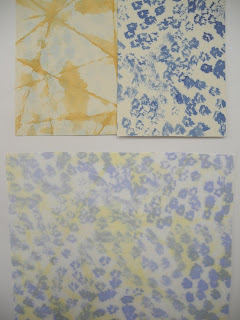Technical workshop has started this week. I was afraid of screen printing, because I struggled with it last year. The first few technical samples (pigment printing) were okay because the mixture is quite thick. On the other hand, gummy mixture for procion dye is runnier compared to pigment, so it's difficult to print and I was almost reminded the last year's nightmare.
Although print workshop is hard for me in a way, I do enjoy printing. There are so many interesting equipment and materials there, and all of them excite me. Especially heat transfer printing is my favorite .. it is able to transfer the texture quite precisely. Because it mirrors, I thought I need to beware of it when I want to design asymmetry shapes.
After the tutorial on Monday, I realised how long I've ignored drawing and concentrated to technical sampling instead. Working on both sides (designing & sampling) is a still big problem for me.
This week was busier than normal, so I faced to my bad time managing skill. Tuesday and Wednesday (when I usually spend on catching up studio work), has needed to be used for essay writing and the fashion show, so my studio work has been standstill. Despite it, fashion show helping was definitely good experience as I could watch dresses very close. Fashion show itself was stunning too—now I'm excited to the next year, and a discipline I want to get in is clear in my mind.








































